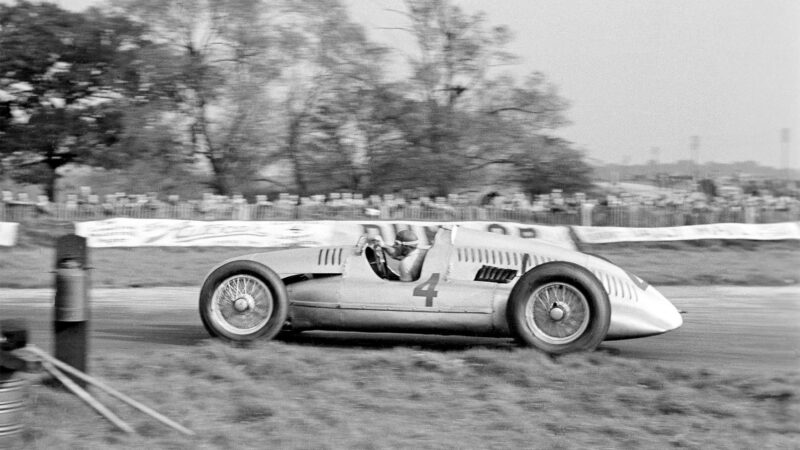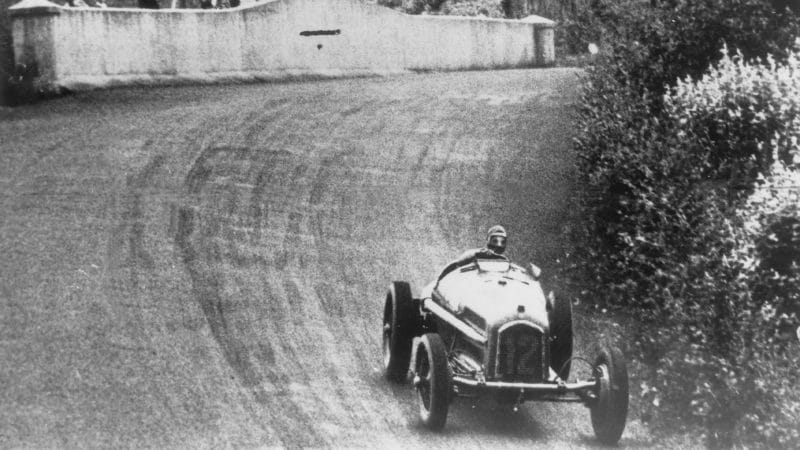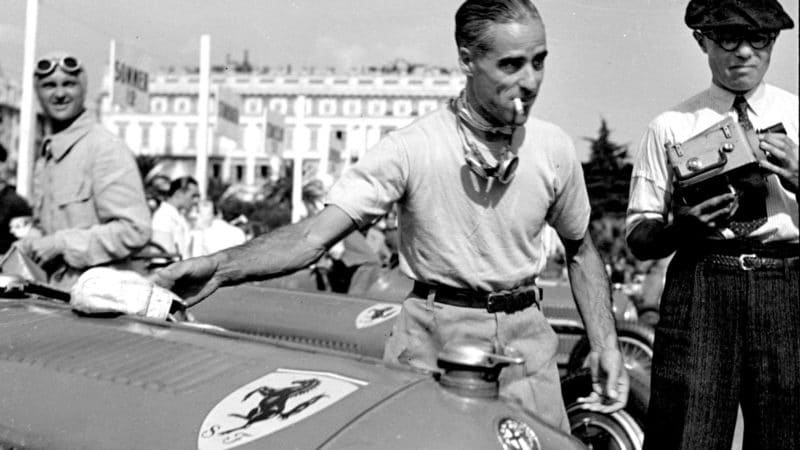“In the case of Nuvolari, you had the impression of a man on an unbroken horse, but instead of fighting it, he let it run free. With him, there was no accepted ‘line’ around a circuit; he would turn into a corner early, aim at the apex, put the power down hard, and do the steering with the throttle, using his hands only for small corrections. It was his speed out of corners that was so exceptional. There was no point in trying to copy his technique, because no-one can borrow another man’s instinct. Only Tazio could drive like Tazio.”
His will to win is what those who knew him remember most, his sheer need to pass the car in front, be it for first place or 10th. And while he was always gracious in defeat, there is a gulf between a good sport and a good loser. Nuvolari hated to lose, but there is no cliche story here of the boxer looking to escape the Bronx tenement. He came from a landowning family; he raced because he wanted to race.
He did not start young, however. The First World War postponed his debut, on motorcycles, until 1920, by which time he was already 28. For 10 years he was a winner on both two and four wheels, but after 1930 he concentrated on cars, and though he drove for Bugatti, Maserati and Auto Union, his name will be forever synonymous with Alfa Romeo, with whom the majority of his successes came.

Nuvolari, manhandling his beast of an Auto Union Type D at Donington ’38
Klemantaski Collection/Getty Images
The early ’30s were years of glory for Alfa Romeo, and Nuvolari did most of the winning. First in the ‘Monza’ Alfa, then in the P3, he had innumerable victories, in both grand prix and sportscar races. By 1934, though, Mercedes-Benz and Auto Union were into grand prix racing, and the pattern of the years up to WWII was set.
Alfa Romeo was nationalised in 1933, and the factory ceased racing, but the cars continued to compete under the banner of Scuderia Ferrari, which had already run Alfa’s racing programme for three years. From 1934, the Prancing Horse replaced the quadrifoglio of the works cars.
By the beginning of 1935, Nuvolari could see that little possibility existed of beating the German teams, and he would have joined Auto Union that year had not the move been vetoed by the recently-signed Achille Varzi. At a personal level, all remained well between them, but Tazio’s rival refused resolutely to be his teammate again. It was not until 1938, following the death of the sublimely talented Bernd Rosemeyer and the enforced retirement of Varzi, that Nuvolari finally went to Auto Union.





